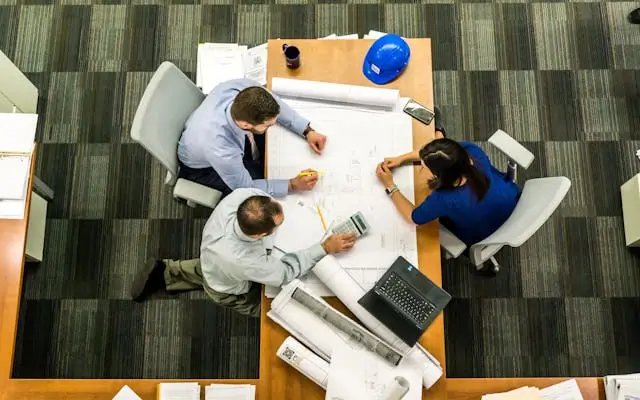Town planners are the unsung heroes behind the cities we live in. They play a crucial role in shaping how our communities grow, ensuring that development is both functional and sustainable. From designing green spaces to managing traffic flow, town planners strike a balance between growth and livability.
They address a wide range of challenges, from zoning laws to urban sprawl, ensuring that cities are not only livable but also efficient and thriving. In a world where cities are constantly evolving, town planners are essential to creating environments that meet the needs of today while preparing for the future.
How Town Planners Shape the Layout of Communities
Town planners play a key role in guiding the development and functioning of communities. One of their main tasks is to establish zoning regulations that define the locations of residential, commercial, and industrial areas. These regulations help keep neighborhoods organized and ensure that businesses and factories are not placed next to homes.
Land use planning is another vital responsibility. Town planners determine how land should be developed, maintaining a balance between residential areas, green spaces, and essential infrastructure such as roads, utilities, and community facilities. This careful balance helps create vibrant, well-planned neighborhoods where people can live, work, and relax.
In countries such as the United States, Canada, and Australia, planners place strong emphasis on community design. They promote walkable neighborhoods with mixed-use developments that combine homes, shops, and parks within easy reach. This approach reduces the need for long commutes and improves the overall quality of life.
Urban sprawl has become a growing concern in many regions. Town planners manage this issue by controlling unplanned growth and ensuring that expansion does not lead to overcrowding or strain existing resources. Whether you are working with town planners in the Central Coast or in other parts of the world, these strategies are essential for building sustainable and livable communities.
Addressing Sustainability and Environmental Impact
Modern town planners focus strongly on sustainability and eco-friendly design. One of their primary methods is the promotion of green building practices. This involves using energy-efficient designs, sustainable materials, and construction techniques that minimize environmental impact. Eco-friendly buildings not only conserve energy but also create healthier living environments for residents.
Creating green places is another core objective. Town planners design parks, greenways, and recreational areas that improve air quality, provide shade, and support public health and well-being. These areas offer opportunities for relaxation and community interaction while helping absorb carbon emissions and enhance the natural landscape.
Transportation and connectivity also play a significant role in sustainable planning. Planners develop efficient public transport systems along with safe cycling lanes and pedestrian pathways. These initiatives reduce car dependency, lower emissions, and contribute to cleaner, healthier urban environments.
Managing Infrastructure and Public Services
As populations grow, town planners must ensure that essential infrastructure keeps pace with demand. This includes systems for water, waste, and energy. Effective planning guarantees that these services can accommodate future growth, preventing shortages and maintaining quality of life. For instance, expanding water treatment facilities or upgrading power grids helps cities remain reliable and resilient as they develop.
Transportation systems are another focus area. Planners design efficient road networks and public transit options that reduce congestion and improve the flow of traffic. Encouraging the use of public transport and cycling not only saves time but also reduces pollution and promotes healthier lifestyles.
Town planners also ensure that public services such as healthcare, education, and emergency response remain accessible. By planning neighborhoods with schools, hospitals, and emergency facilities nearby, they help residents live more conveniently and safely.
Promoting Economic Growth through Smart Development
Town planners contribute significantly to economic growth through well-planned development. They encourage commercial and mixed-use projects that integrate businesses, shops, and housing. This approach supports job creation, attracts visitors, and stimulates local economies.
Economic diversification is another important goal. Planners work to build communities that do not depend on a single industry. By fostering a mix of sectors such as technology, healthcare, and retail, they create resilient economies that can adapt to change and provide a wide range of job opportunities.
Attracting investment is also essential for long-term prosperity. Town planners design environments that appeal to both developers and businesses by improving infrastructure and accessibility. These efforts make communities more attractive for future projects and sustainable growth.
Engaging the Community and Stakeholders
Successful development depends on collaboration between planners, governments, developers, and residents. Town planners ensure that the voices of local communities are heard through public consultations and engagement initiatives. By collecting input from residents, they can create plans that reflect real community needs and values.
Balancing stakeholder interests is also crucial. Planners must consider the objectives of developers, local councils, and community groups. Through cooperation and negotiation, they work to find solutions that serve everyone’s interests.
The ultimate goal is to build consensus and inclusivity. Whether through creating affordable housing, expanding green areas, or improving infrastructure, involving the public in the planning process ensures that projects are well-received and sustainable in the long term.
Town Planners Shape the Future of Our Cities
Town planners are instrumental in shaping communities that balance growth, sustainability, and the well-being of residents. Through careful management of land, resources, and infrastructure, they ensure cities remain livable, efficient, and resilient.
By combining sound planning with community engagement, town planners help build urban environments that will continue to thrive for generations to come. Their work defines not only how we live today but also how future cities will evolve into healthier and more sustainable places to call home.
